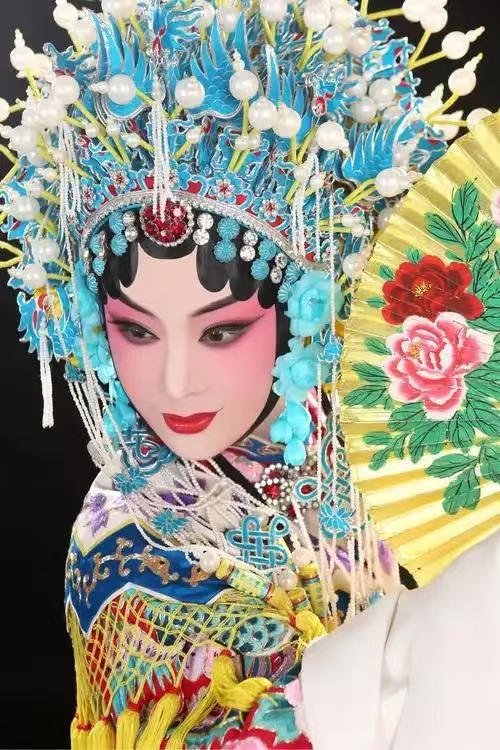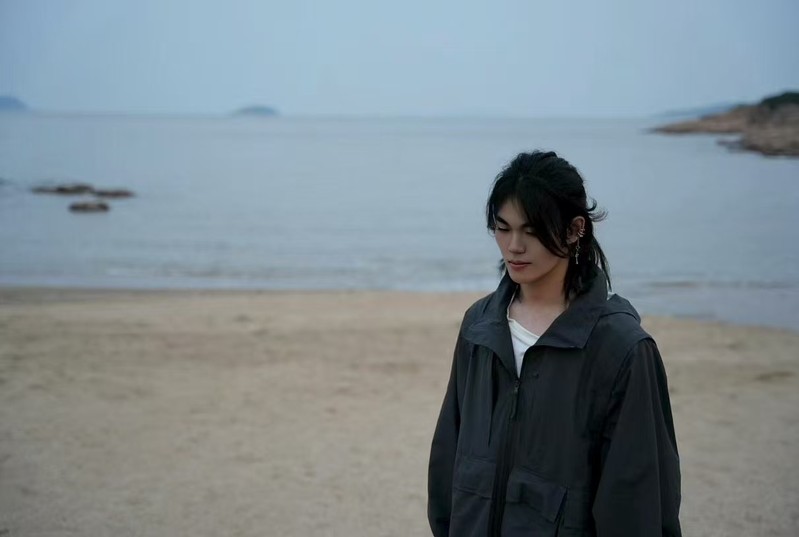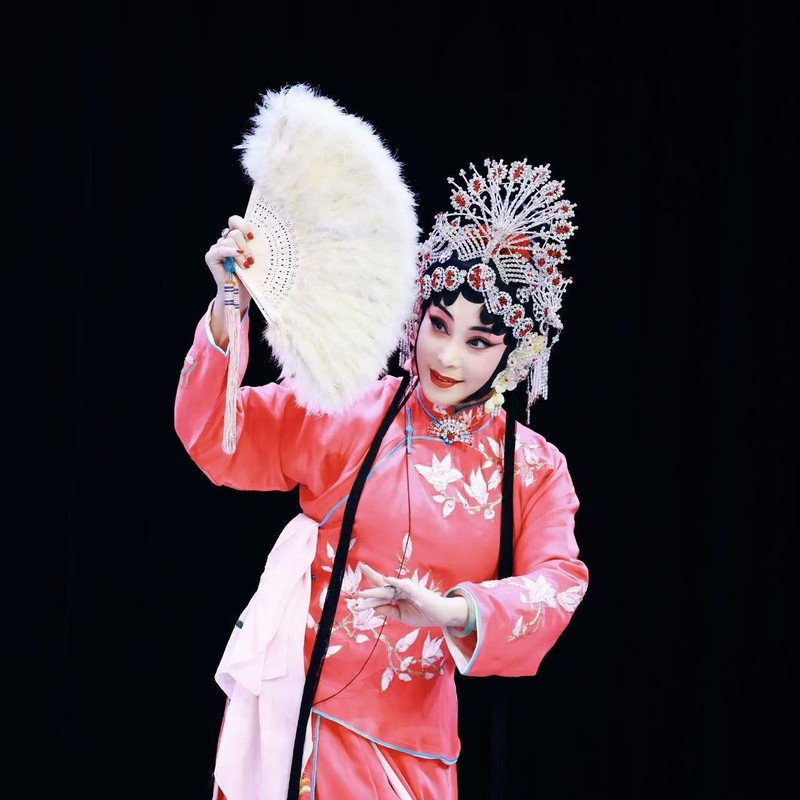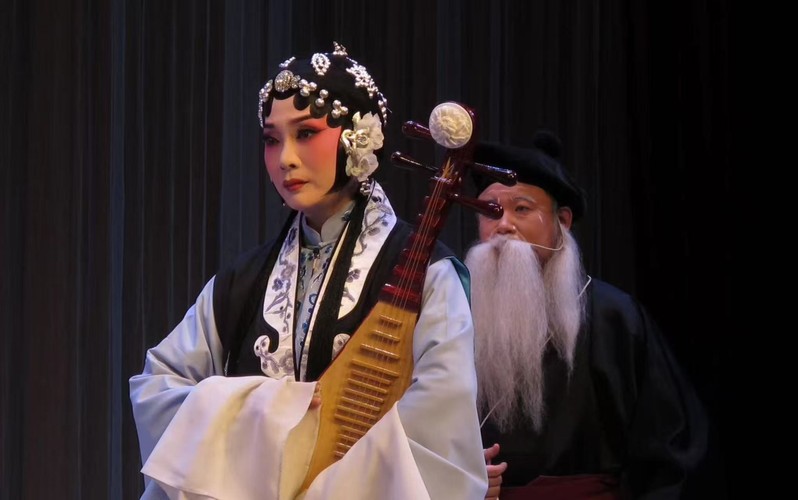评剧是中国五大戏曲剧种之一,起源于清末河北唐山一带,由民间说唱“莲花落”发展而来,兼具民间文艺的鲜活与地方特色。其唱腔通俗易懂、婉转抒情,表演贴近生活,擅长展现民间百态与情感故事,经典剧目有《刘巧儿》《花为媒》等,深受大众喜爱,是北方地区极具代表性的戏曲剧种。 本期我们跟随翻译2404班张斌裔同学的脚步,一同走近评剧这朵绽放在燕赵大地的艺术奇葩。

蒲公“英”说书人
介绍:大家好,我是翻译2404班的张斌裔,爱好美术、街舞和羽毛球,同时也非常热爱中国戏曲文化。

原文:
Origin
Pingju opera evolved from Lianhualao, a folk ditty popular in Northern China’s Hebei province and its neighboring area at the end of the Qing Dynasty (1644-1911). It drew inspirations from the Hebei clapper opera (Hebei bangzi) and Peking opera while integrating other vernacular performing arts in northeastern China. By the early 20th century, it had grown into an independent operatic form.
Since the foundation of the People's Republic of China in 1949, Pingju opera has tremendously expanded. A large number of modern stories or plays based on historical events were created which helped promote it.
Roles
In the early stage, Pingju opera didn't have a clear division of roles. In a Pingju drama there were only male and female characters, which were played by two or at most three actors and actresses, portraying different characters with simple stage properties. After a significant reform from 1909 to 1921, Pingju opera grew into a major operatic form. It learnt from the Peking opera and the Hebei clapper opera, and gradually completed its own category of roles. Now the Pingju opera has female role types (Dan) of the Qingyi (mature, virtuous, and elite women), Huadan (unmarried women), Laodan (old women), and Caidan (amusing women), male role types (Sheng) of Xiaosheng (young men) and Laosheng (old men), rough man role of Hualian (Jing, the painted-face male role with a forceful character), and the clown role (Chou). After the New China was founded, the male roles of Pingju opera substantially developed -- the Huanglian role was created and the Laosheng role was perfected. Pingju opera’s musical accompaniment was also reformed to adapt to new vocal categories.
Themes of the Pingju Repertoire
An influential regional theatre, most Pingju operas tell stories of the virtuous and the righteous triumphing over evil. To some extent, this new form of operatic art was created to remark on both the past and the contemporary, accounting for its name -- in the Chinese language Pingju could be translated as "plays of remark". The librettist Cheng Zhaocai (1874-1929), regarded as the founding father of Pingju opera, was quick to respond to the changes of the time. He wrote a number of well received modern plays which reflect contemporary life. One work in his repertoire, Third Sister Yang Files a Lawsuit (Yangsanjie gaozhuang), has enjoyed great popularity since its debut in 1919, and has become a Pingju opera classic.
Musical Instruments
Accompanying musical instruments consist of two groups: String and wind instrument and percussion instruments. The percussion instruments include drum, Bangzi (watchman’s clapper), gong, and small cymbals, while string and wind instruments include Banhu, Erhu, Zhonghu, Dihu (a bowed two stringed instrument with a thin wooden soundboard), and Pipa lute. Western musical instruments including bass, brass-wind instruments, cello, and violin, have also been adopted.
Tunes
The tunes of Pingju opera are developed on the basis of the folk music of Tangshan folk songs and Lianhualuo, absorbing musical factors of other local operas such as the northeast song-and-dance duet, Peking opera, Hebei clapper opera and other local operas in Beijing and Tianjin.

译文:
起源
评剧由清末(1644-1911年)流行于中国北方河北省及其周边地区的民间小调“莲花落”演变而来。它借鉴了河北梆子和京剧的元素,同时融合了中国东北地区的其他民间表演艺术。到20世纪初,评剧已发展成为一种独立的戏曲形式。 1949年中华人民共和国成立后,评剧得到了极大的发展。大量以现代生活或历史事件为题材的剧目被创作出来,推动了评剧的传播。
角色
早期的评剧并没有明确的角色划分。一出评剧里只有男性和女性角色,由两到三名演员出演,凭借简单的舞台道具演绎不同人物。
1909年至1921年的重大改革后,评剧发展成为一种主要的戏曲形式。它借鉴了京剧和河北梆子的特点,逐渐完善了自身的角色体系。如今,评剧的女性角色(旦行)包括青衣(成熟、贤淑的名门女子)、花旦(未婚女子)、老旦(老年妇女)和彩旦(滑稽风趣的女性);男性角色(生行)有小生(年轻男子)和老生(老年男子);还有性格刚直的花脸(净行,面部勾画脸谱的男性角色)以及丑角。
新中国成立后,评剧的男性角色得到了显著发展——新增了“黄连”这一角色,老生角色也更加完善。评剧的音乐伴奏也进行了改革,以适应新的唱腔类型。
评剧剧目的主题
评剧是一种颇具影响力的地方戏曲,大多数评剧讲述的是正义善良之人战胜邪恶的故事。从某种程度上说,这种新兴的戏曲艺术形式旨在评古论今,这也解释了它“评剧”一名的由来——在汉语中,“评剧”可译为“评说的戏剧”。
剧作家成兆才(1874-1929)被誉为评剧的奠基人,他对时代变迁反应敏锐,创作了多部反映当代生活、广受好评的现代剧目。其代表作《杨三姐告状》自1919年首演以来便广受欢迎,成为评剧经典。
乐器
伴奏乐器分为两组:弦管乐器和打击乐器。 打击乐器包括鼓、梆子、锣和小镲;弦管乐器则有板胡、二胡、中胡、低胡(一种带有薄木音板的弓弦乐器)和琵琶。此外,评剧还采用了西方乐器,如贝司、铜管乐器、大提琴和小提琴。
唱腔
评剧的唱腔以唐山民歌和莲花落等民间音乐为基础发展而成,吸收了东北二人转、京剧、河北梆子以及京津地区其他地方戏曲等多种戏曲的音乐元素。

四六级关键词,接住啦
Evolve v. 演变;进化
Integrate v. 整合;融入
Vernacular adj. 民间的;方言的
Virtuous adj. 有道德的;善良的
Tremendously adv. 极大地;极其
Accompaniment n. 伴奏
四六级暴击,小试牛刀
1.When did Pingju opera grow into an independent operatic form?
A. At the end of the Qing Dynasty
B. By the early 20th century
C. Since 1949
D. From 1909 to 1921
Answer 1:B
解析:文章第一段提到“By the early 20th century, it had grown into an independent operatic form.”(到20世纪初,它已发展成为一种独立的戏曲形式)。
2.Which of the following is NOT a female role type (Dan) in Pingju opera?
A. Qingyi
B. Xiaosheng
C. Laodan
D. Caidan
Answer 2:B
解析:文章第二段指出“female role types (Dan) of the Qingyi... Huadan... Laodan... and Caidan... male role types (Sheng) of Xiaosheng...”(旦角包括青衣、花旦、老旦、彩旦……生角包括小生……),可知小生是男性角色。
3.What is the main theme of most Pingju operas?
A. Love stories
B. The virtuous and the righteous triumphing over evil
C. Historical wars
D. Folk customs
Answer3 :B
解析:文章第三段提到“most Pingju operas tell stories of the virtuous and the righteous triumphing over evil.”(大多数评剧讲述正义战胜邪恶的故事)。
本文摘录自中国服务信息网




